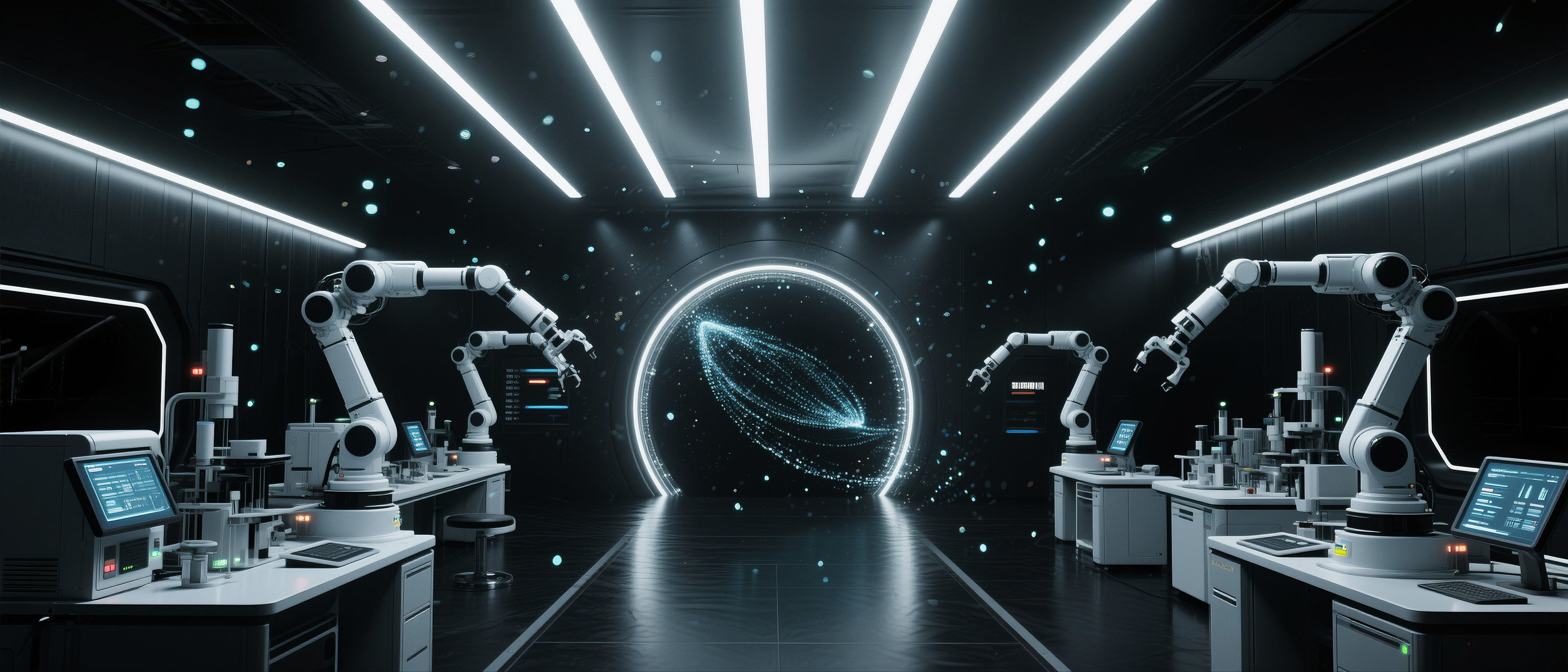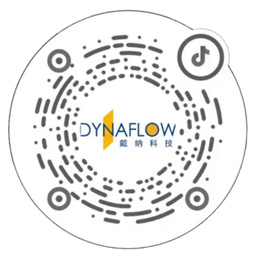AI + Lights-out Laboratories
Published Time:
2025-06-10
AI + Lights-out Laboratories, developed by Beijing Dynaflow Lab Solution Co., Ltd., is a comprehensive solution integrating cutting-edge technologies, setting a new benchmark for laboratory automation. As a professional comprehensive solution provider, this laboratory deeply integrates machine learning AI algorithm management platforms, intelligent robots, automatic control equipment, and advanced experimental instruments, realizing unmanned operation and full-process closed-loop control. With its powerful self-learning capabilities, it can automatically complete a series of tasks such as sample processing, operation of experimental instruments, reagent and consumable transportation, environmental control, data analysis, and report generation according to preset technical routes. It can partially or completely replace manual labor, efficiently completing experimental processes with high repetition, strict precision requirements, high danger, or special environmental needs, truly achieving the unmanned "lights-out laboratory" operation mode.
Overview
AI + Lights-out Laboratories, developed by Beijing Dynaflow Lab Solution Co., Ltd., is a comprehensive solution integrating cutting-edge technologies, setting a new benchmark for laboratory automation. As a professional comprehensive solution provider, this laboratory deeply integrates machine learning AI algorithm management platforms, intelligent robots, automatic control equipment, and advanced experimental instruments, realizing unmanned operation and full-process closed-loop control. With its powerful self-learning capabilities, it can automatically complete a series of tasks such as sample processing, operation of experimental instruments, reagent and consumable transportation, environmental control, data analysis, and report generation according to preset technical routes. It can partially or completely replace manual labor, efficiently completing experimental processes with high repetition, strict precision requirements, high danger, or special environmental needs, truly achieving the unmanned "lights-out laboratory" operation mode.
Basic Information
Chinese Name: AI + Lights-out Laboratories
Company: Beijing Dynaflow Lab Solution Co., Ltd.
Introduction
Dynaflow's AI + Lights-out Laboratories is an innovative engine in the R&D field, its core advantage being the ultimate improvement of R&D efficiency. Data shows that the efficiency of AI + Lights-out Laboratories can be as high as 480 times, especially for trial-and-error R&D and repetitive tasks. The laboratory adopts a fully unmanned intelligent execution mode, generating high-quality data through the autonomous operation of robot AI. This data is not only accurate and reliable, but can also be continuously learned and optimized by the AI system, providing data-driven decision support for the R&D process.
More importantly, AI + Lights-out Laboratories deeply embeds intelligent algorithms with self-learning and self-evolution capabilities into the R&D process. It can conduct real-time verification and feedback based on experimental results, dynamically adjust experimental paths, and achieve intelligent iteration of the R&D process. This data-driven scientific research assistance model completely changes the linear logic of traditional R&D, allowing R&D teams to focus on innovative work while ensuring the scientific and economic nature of the experimental route, truly promoting the transformation of scientific research from "experience-driven" to "intelligence-driven" paradigm.
Advantages
Unmanned operation: Laboratory processes are completed by robots, robotic arms, and automated equipment, without the need for laboratory personnel, allowing for 24/7 operation, reducing human intervention, and improving efficiency and accuracy.
Intelligent decision-making: AI algorithms are used to design experimental schemes, optimize parameters, and even autonomously analyze results and adjust subsequent steps, improving the success rate and efficiency of experiments.
Full-process closed-loop: From sample processing and experiment execution to data analysis, a complete closed-loop is formed, reducing human error and ensuring the reliability and consistency of experimental results.
24-hour operation: Unrestricted by human working hours, it can significantly shorten the R&D cycle, especially suitable for fields requiring high-throughput experiments.
High-precision operation: Equipped with high-precision collaborative robots, with precision fixtures, it can accurately perform complex operations, with high repeat positioning accuracy, ensuring the accuracy of experiments.
Real-time monitoring and data management: Provides real-time status visualization, supports remote monitoring and alarms, and the data traceability and management system can record key parameters, data can be exported and seamlessly integrated with LIMS.
High safety: Avoids personnel contact with hazardous chemicals or biological samples, reducing experimental risks and ensuring the safety of scientific research personnel.
Self-learning and optimization: The AI + robot system has self-learning capabilities and can continuously optimize operational processes, improving experimental efficiency and quality.
Cost reduction and efficiency improvement: Long-term savings in labor costs, reduced waste of experimental materials, improved experimental efficiency, and higher economic benefits for the laboratory.
Wide range of applications: It can be widely used in various fields such as chemical engineering, materials, new energy batteries, biopharmaceutical R&D, life sciences, and testing and inspection, meeting the needs of different industries.
Customized Services:
1. Development of digital management platform:
Develop targeted digital management platform software according to user needs, deployed on the server; responsible for data analysis, logical judgment, and issuing instructions, it is the "brain" of the robot laboratory.
2. Development of IOT automatic control system:
Build a unified connection and management of smart space equipment, realizing automated detection, transparent laboratory, refined management, and data-driven decision-making.
3. Integration of automated equipment
Consisting of robots, intelligent hardware devices, PLC control and drive devices, various sensors, etc., it receives instructions from the digital management platform and executes them; schedules and manages all participating robots and workstations.
Applicable Scenarios:
AI + Lights-out Laboratories covers the entire laboratory process, with applications covering the petrochemical, quarantine and inspection, life sciences, and drug R&D fields.
Application Cases
Dynaflow's lights-out laboratory can automatically complete sample testing tasks according to preset technical routes. It also has partial self-learning and evolution capabilities, and can replace manual testing processes with high repetition, high precision requirements, high risk, or harsh environmental conditions. Lights-out laboratory applications cover: petroleum, chemical, materials, energy, food, synthetic biology, biopharmaceuticals, life sciences, and analytical testing fields.
In a lights-out laboratory for testing at a certain daily chemical enterprise, 1028 samples can be tested daily, which is 64.25 times the number of samples tested by traditional manual methods. The automatic weighing robot overcomes the difficulty of inaccurate control of viscous sample pipetting. After repeated weighing dozens or hundreds of times, the A1+ robot self-learns and evolves, becoming more accurate, infinitely approaching 0.1 grams. It is applied to the detection of viscous liquid samples such as shampoo, shower gel, and hand sanitizer. The lights-out laboratory can complete a large number of sample submissions in 24 hours, and finally automatically complete the detection and data transmission.
High-throughput viscous liquid sample testing:
AI + Lights-out Laboratories can process approximately 2000 bottles of samples and complete approximately 10,000 experiments per day. It has fully realized unmanned operation of the entire laboratory process, significantly improving experimental efficiency, safety, and data traceability. The number of laboratory scientific personnel can be reduced by 83%, and the laboratory construction area can be reduced by 40%.
Previous
Previous:
Hot Articles
Share to







